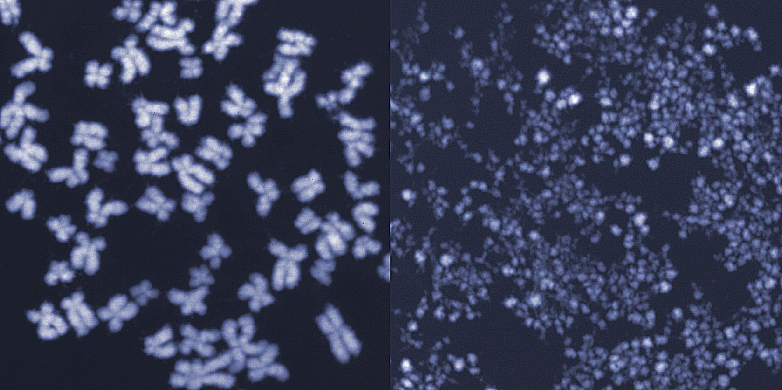Putting chromosomes through the shredder
When a certain human enzyme is left uncontrolled, it breaks up chromosomes into tiny pieces. This is damaging to cells, but useful for killing tumours. ETH researchers have now come to understand the underlying mechanism.

Our cells contain the enzyme MUS81; this is called on in emergencies, for example, when cells are unable to replicate because the DNA-replication machinery gets tangled up in strands of DNA. MUS81 then works like a pair of genetic scissors to help clear the jam: the enzyme cuts the DNA molecule near the site of stalled replication, thus enabling the replication to restart and the genome to be entirely copied before cell division.
“In order for the enzyme to sever DNA molecules only when this actually helps the cells, the cells have a very precise mechanism that regulates its function,” explains Joao Matos, a professor from the Institute of Biochemistry at ETH Zurich. “If the enzyme were to cut DNA indiscriminately, this would be fatal for the cells,” adds Heike Duda, a doctoral student in the Matos group.
A team of researchers headed by Matos have now unlocked the key to understanding the molecular details involved in regulating this enzyme in a human cell culture. The researchers’ paper, which was published in the scientific journal Developmental Cell, explains how certain proteins activate or suppress the DNA scissors.
Sheding light on clinical trials
Their experiments are also encouraging for clinical trials of a cancer drug that targets the regulation of MUS81. The drug, originally developed by Japanese researchers, is called MK-1775. Clinical trials to examine its effectiveness for treating different types of cancer are currently underway.
MK-1775 disables a control protein that regulates the cell cycle. ETH researchers have now shown how this causes MUS81 to spin out of control and break up chromosomes relentlessly – it shreds the entire chromosome set, thus killing the cells.
According to the researchers, the new findings on the mechanism of action could help to shed light on the results of the ongoing clinical trials and, for example, explain why the cancer drug works better for some patients than others.
Reference
Duda H, Arter M, Gloggnitzer J, Teloni F, Wild P, Blanco MG, Altmeyer M, Matos J: A Mechanism for Controlled Breakage of Under-replicated Chromosomes during Mitosis. Developmental Cell 2016, 39: 1-16, doi: external page10.1016/j.devcel.2016.11.017call_made
